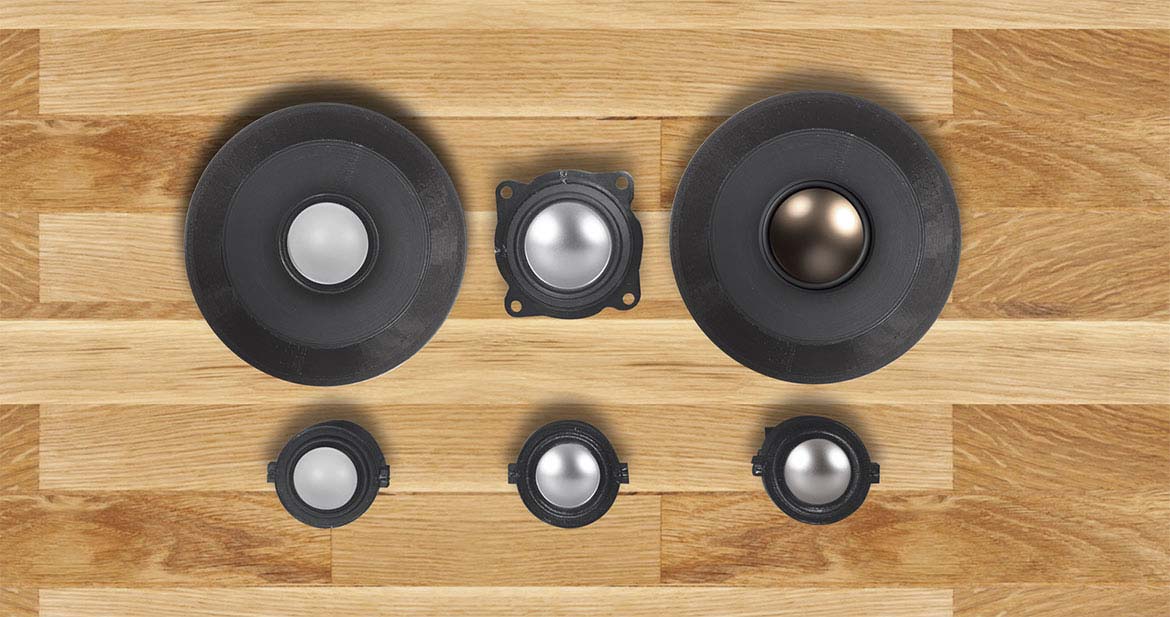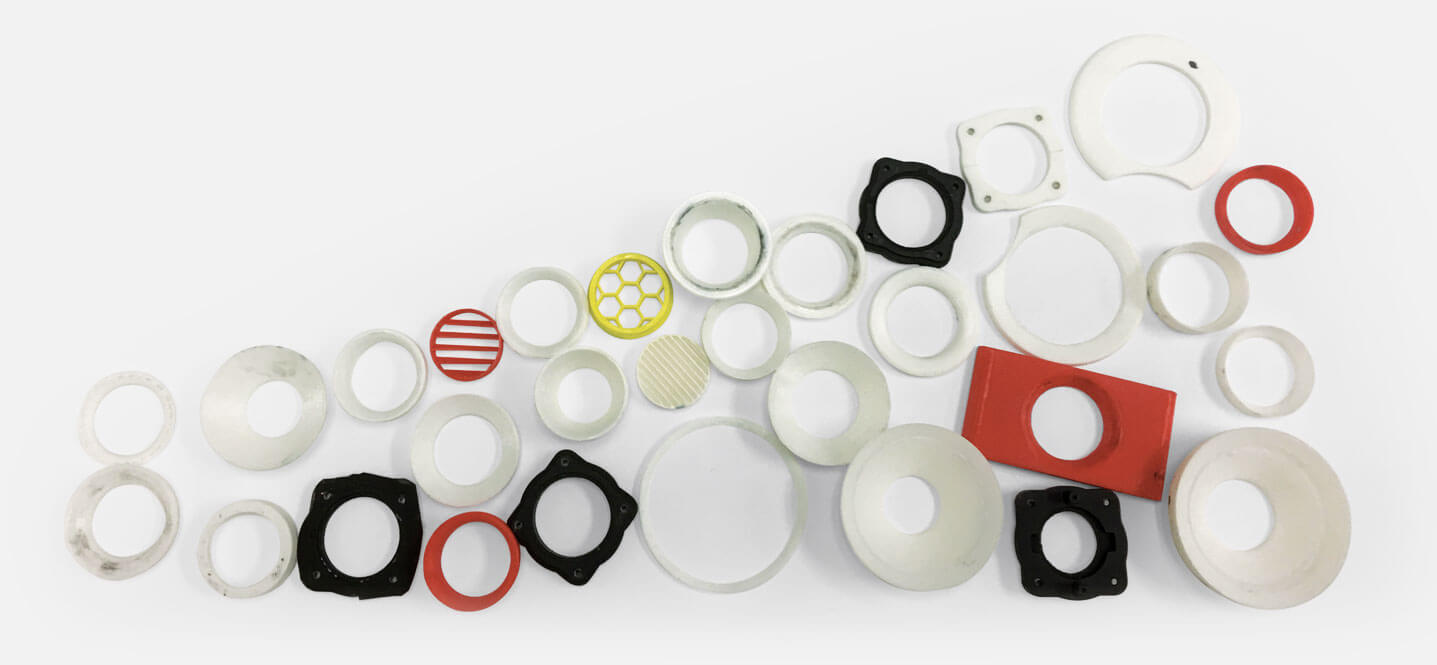
X-Fi SONIC CARRIER – ACHIEVING THE UNTHINKABLE
THE MAKING OF THE “SOUNDBAR OF THE GODS”
by W. H. Sim, Creator of Sound Blaster and Sonic Carrier
Since the creation of the Sound Blaster in 1989, which sold over 400 million units, Creative has amassed a myriad of technologies and know-how in the audio space. In the decades that followed, hundreds more high-quality, high-performance audio marvels were invented. While many of them were great in performance and had amazing value, none of them had quenched the lingering thirst in me because they primarily served the mass-market needs for high-quality products at low prices, which Creative is associated with. Until now…
I knew for a long time that Creative was capable of developing such an invention, but it still took us great courage to break our mold and enter this bold new market. The nagging questions which hold us back are always similar:
How much are you going to sell such a high-end product, who is your target audience, how are you going to market it, how are you going to support it, how much resource is needed, what is the ROI, is there a market for such a product, what market are you going after, who is going to buy it… etc., etc.
Finally, I put an end to all this agony and said, I am designing this @$#%&*@ product for myself! OK?!!
How much? A lot. It is going to be a super high-end product.
Target audience? Me. And people who share my taste and passion.
How to market it? Somehow. Nobody has sold anything like this before, we shall learn along the way. Start with me.
How to support it? Only the best. I want to be pampered and enjoy the product; not be a slave of it.
How much resource? Everything we have. Throw everything into it and don’t look back.
What is the ROI? What ROI? Who cares?!
Is there a market for it? No. If there is, I won’t be creating it.
What market are you going after? Nobody’s. We are going to create a new one.
Who is going to buy it? Doesn’t matter. Design it with all your heart and people will come.
Then, how to start? For Heaven’s Sake – Just Do It!
So, what is this outrageous product? Since the world of Home Theater systems were introduced, it has driven me crazy perennially to have to deal with so many speakers, so many cables, so many remotes and so many boxes in front, below, and on top of the TV. The back of my big TV was literally a rat’s nest. As if this is not enough, the other world of high-end audio is even crazier, requiring even more speakers, amplifiers, pre-amplifiers, DACs, A-Z types of players and what have you, and yes, more remotes. Did I mention karaoke?

Why can’t I have all these in just one box? I was pulling hair and crying exasperatedly to my engineers and designers. Just one box in front of the big screen, please… OK, I can live with an extra subwoofer because of the big badass bass needed. But keep it hidden away and no cables!
Yes, I want the best high-end audio experience, supporting all the latest music streaming services, in the full glory of 24bit 192kHz high-resolution audio; regardless of the source of the material – wirelessly, that is. I want the latest and greatest home theatre experience available to be in it too. And just one neat elegant unit in front of the TV, no cables, no other speakers around the room.
I want to add in the latest movie streaming and video playback components, so that I can also get rid of all those video boxes too. It should also host other video device dongles if needed in the future. That reminds me, we also need to future-proof the product!
Mind you, it wasn’t easy. It’s like pulling teeth one by one from the engineers. Not that they couldn’t do it, they explained meekly, but as the number of features and components increase, the complexity of the design increases exponentially. They needed more time. Make time then. They needed more people. I don’t care, throw in more people.
And boy did they throw in a lot of people: product engineers, hardware engineers, firmware engineers, software engineers, UI designers, algorithm developers, acoustic engineers, industrial designers, mechanical designers, and even me, the chief dreamer. More than 60 of our engineers from all over the world were mobilized to the cause.
Having settled the engineers, I zoomed in on the industrial and mechanical designers. I wanted them to design the most beautiful designer piece they could imagine for this out-of-this-world entity. Sleek, elegant, expensive, exquisite, designer furniture, I started hurling adjectives at them until they came up with something really breathtaking. As I was hurling adjectives, the cost of the mechanical parts went through the roof. Finally, they came up with something that was really, really something. So was the cost. No way! I instructed them to do a cost down.
After working very hard, they came back with a cheaper design. We all looked at the original version again in comparison. We all sighed and sighed. Finally, I told them, let’s keep the original out-of-thisworld beauty – it was just too good to be discarded. I will deal with the cost issue later. It would be a cosmic tragedy to kill this otherworldly beauty.
The name of the product was another big subject. I didn’t want people to associate it with a soundbar, and be pigeon-holed in that cheap category. It is way, way beyond any soundbar out there. It is in a class of its own. It is not a boat, it is an aircraft carrier towering above all the other ships and boats. Like the aircraft carrier, it hosts an array of other sophisticated systems. Hence, I named it the X-Fi Sonic Carrier. X-Fi stands for eXtreme Fidelity which forms the basis of our latest and most advanced audio technologies to deliver the best possible audio in such a unique device.
With the first prototype, we went to Las Vegas in January 2016 for the CES show. Throngs of crowds queued up to watch a demo of the Sonic Carrier in the soundproof theatrette at our booth. People were dazzled by it. Many claimed that the audio from the Sonic Carrier was even better than that of a movie they watched in the cinema. But I was still not satisfied. Why? Because I watched a live concert in Las Vegas. There I experienced chest-pounding bass from monstrous speakers on the stage. I wanted that devastating punch from my Sonic Carrier.
All my engineers freaked out. Do you know how big a subwoofer like that will be, they challenged me. I don’t care. From the original twin 5 inch by 8 inch drivers in the sub, we must increase to a pair of 10 inch drivers. So? So the size and weight will be more than doubled and the amplifier and power supply needed to be tripled. That will effectively quadruple the acoustic power to get your chest-pounding bass. Well? Well, it will be huge, ugly and cannot be hidden anymore. Oh? That’s looks like a job for our terrific ID team. I told the designers to transform this huge subwoofer into designer furniture – you don’t hide it, you flaunt it.
Oh, by the way, you can’t buy a power supply module that can handle such power. Design it ourselves then. And you also need to increase the power of the speaker system in the main unit to balance them with the subwoofer. Okie Dokie. But the cost is going to go up again. Cost is no object, because by this time, we had fantastic feedback from CES, the response to our crowdfunding style marketing was phenomenal. They loved the Sonic Carrier, and I wanted to give them and myself the best. Schedule? Our supporters will understand when we strive very hard to give them the best of the best.
Just before going into mass production, when the second stage prototypes with the improved subwoofer and main unit were done, we realized that the design of the up-firing tweeters, although doing hell of a job, were still not optimized. In order to achieve the best of the best, we re-designed the tweeter housing and introduced an even higher grade super tweeter to get the job done. To get to the ideal solution, our engineers had to painstakingly plough through, design, test and measure about 30 different tweeter housing prototypes on 4 different tweeters, adding up to over one hundred permutations. With this final mod and the other previous mods, the Dolby Atmos experience in the Sonic Carrier can now truly rival that of a premium cinema. Bringing the Cinema to Your Home became a reality.
Along the way, I also pushed for a major improvement in our X-Fi technology. The challenge was how to deliver the best high-end audio in a 7.1 system with small drivers in front of the TV. The drivers had to be small so that the system could be sleek and elegant. So we expanded the 7.1 system into a 15.2 system, with increased numbers of smaller drivers to deliver the big sound needed for a home cinema system; and with enough head room for a high-end audio system. We put in tons of processing power, in fact one DSP for each channel. Together with the X-Fi DSP which converts all stereo sources into a 7.1 source, at the same time upscaling them into 24-bit high-resolution, the Sonic Carrier delivers a new kind of 15.2 stereo experience, which we call SuperWide X-Fi stereo. I just love this new stereo experience.
In a normal high-end audio system, one needs to sit exactly in the center of the two speakers to get the ideal audio experience, the so-called sweet spot. But it’s not an ideal situation, especially for those of us who are always very busy and moving about doing multiple things in the room. Sonic Carrier’s Superwide X-Fi does away with the rigid sweet spot requirement, delivering an expansive soundstage. You can now enjoy great audio from different parts of the room.
In fact, this radical technology is truly a revelation to the senses. It transports you into a magical three-dimensional audio utopia beyond your imagination. This is the Audio of Tomorrow.
We have finally come to the end of a long and arduous journey. I’m glad that what started in early 2015 as a crazy idea and an impossible dream, has found numerous supporters who share the passion for this idea. And now, together with our supporters, we’ve made this dream come true.
Achieving the unthinkable is Sonic Carrier’s reason for existence.
